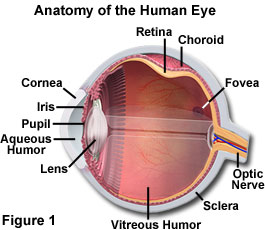Introduction In the vast cosmos of scientific discovery, one element stands out as a beacon of optics innovation: light. From the infinitesimally small world of nanotechnology to the expansive realms observed through telescopes, the utilization of light has revolutionized numerous fields. This article delves into the groundbreaking advancements propelling us toward a brighter future. Shedding
Introduction
In the vast cosmos of scientific discovery, one element stands out as a beacon of optics innovation: light. From the infinitesimally small world of nanotechnology to the expansive realms observed through telescopes, the utilization of light has revolutionized numerous fields. This article delves into the groundbreaking advancements propelling us toward a brighter future.
Shedding Light on Nanoscale Marvels
In the realm of nanotechnology, light serves as both a tool and a medium for exploration. At the nanoscale, where dimensions are measured in billionths of a meter, researchers harness light to manipulate matter with unprecedented precision. Photonics, the study and application of light, lies at the heart of nanoscale innovation. By leveraging photons, scientists engineer devices and systems with extraordinary capabilities, from ultrafast data transmission to high-resolution imaging.
Illuminating Medicine’s Frontiers

Image by: nytimes.com
In neuroscience, light emerges as a transformative force through optogenetics. By genetically modifying neurons to respond to light, researchers illuminate the intricacies of brain function, paving the way for novel therapies for neurological disorders. Harnessing the power of light, photodynamic therapy offers a targeted approach to cancer treatment. By activating photosensitive drugs with light, physicians can precisely target tumor cells while minimizing damage to healthy tissue.
Radiant Insights in Astronomy
The evolution of telescopes epitomizes humanity’s quest to unravel the mysteries of the universe. From Galileo’s humble refractor to the colossal observatories of today, advancements in optics and imaging have revolutionized our understanding of the cosmos. In the realm of observational astronomy, adaptive optics represents a paradigm shift. By compensating for atmospheric distortions in real-time, these systems deliver unprecedented clarity, enabling astronomers to peer deeper into space than ever before.
Shaping Tomorrow’s Technologies
At the forefront of quantum technology, researchers harness the peculiar properties of light to unlock new frontiers. Quantum light sources, such as single-photon emitters, hold the promise of ultra-secure communication and quantum computing. Metamaterials, engineered composites with exotic properties, offer unprecedented control over light. From cloaking devices to superlenses, these materials defy conventional optics, opening avenues for unprecedented technological innovation.
Science of Optics and the Human Experience

Image by: Yandex
Science of Optics shapes our perception of the world and enriches the human experience in profound ways. From the awe-inspiring beauty of a rainbow to the intricate patterns of a kaleidoscope, light captivates our imagination and invites us to explore the wonders of the universe.
Beyond its aesthetic appeal, optics plays a crucial role in enhancing communication, entertainment, and education. Through the development of optical technologies such as virtual reality and augmented reality, we can create immersive experiences that transport us to new realms of creativity and innovation.
Light, the cornerstone of Optics encompasses a spectrum of wavelengths, each revealing unique insights into the nature of our surroundings. Whether it’s the refraction of light in a raindrop forming a rainbow or the dispersion of starlight revealing the composition of distant galaxies, eyesight allows us to unravel the mysteries of the universe.
Conclusion
In the tapestry of scientific progress, light serves as both a beacon and a brush, illuminating the mysteries of the universe and painting the landscape of technological innovation. From the infinitesimal realm of nanotechnology to the boundless expanse of the cosmos, the future shines bright with possibilities, guided by the radiant force of light.
_______________________________________________________________________
FAQs
Q: How does light influence nanotechnology?
A: Light enables precise manipulation and characterization of nanoscale materials, essential for advancing nanotechnology.
Q: What is the significance of adaptive optics in astronomy?
A: Adaptive optics mitigate atmospheric distortions, allowing astronomers to obtain clearer images of celestial objects.
Q: Can photodynamic therapy be used for conditions other than cancer?
A: Yes, photodynamic therapy shows promise in treating various medical conditions, including certain infections and skin disorders.
Q: How do quantum light sources differ from conventional light sources?
A: Quantum light sources emit photons one at a time, offering unparalleled security and efficiency compared to traditional light sources.
Q: Are metamaterials purely theoretical, or are there practical applications?
A: Metamaterials have numerous practical applications, ranging from advanced optics to innovative cloaking devices.
Q: What is the role of light in optogenetics?
A: In optogenetics, light is used to control the activity of genetically modified neurons, facilitating the study of neural circuits and behavior.
















